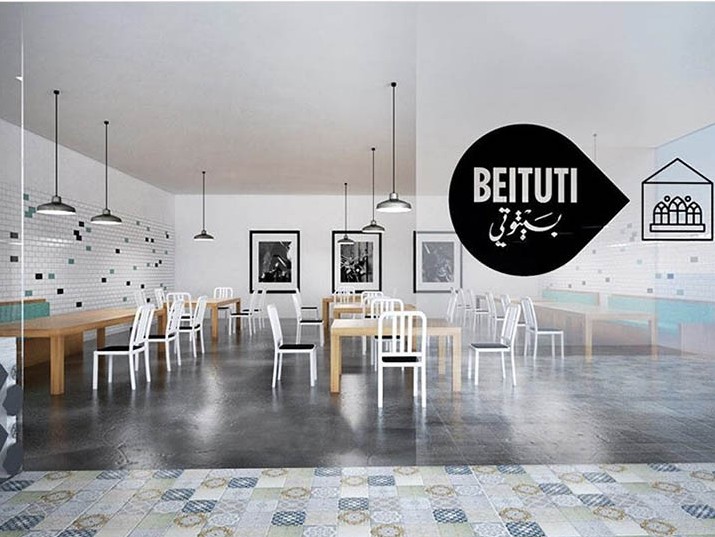Industry Talk - Interviews
The Importance of Play Transforming the Consumer Experience
by Fayza Bjayou
April 30, 2015
.jpg) Advertisement
AdvertisementFitch, a global retail and brand consultancy, transforms and accelerates business success by combining the physical human and digital elements of a brand to create unique experience signatures. They are driven by the objective to translate their understanding of consumer choices and trends into strategic platforms that help clients develop profound and impactful brand expressions.
Shaghig Anserlian, Associate Design Director at FITCH, who took the stage at Dubai Lynx 2015, spoke with ArabAd about the future of brand design, the importance of play and how the ever-evolving nature of technology is affecting the way brands communicate with consumers.
What is the future of brand design in the MENA region and globally?
The future is growing fast. There is a strong ambition to push the boundaries and set trends. Consumers and local brands no longer want Western brands taking the lead in the innovation. We are seeing a role reversal now with local brands driving their own revolutionary ideas. There is a clear shift in consumer expectations and experience. Brands are recognizing that people are looking to break away from conventional, localised ways of shopping. And as the market grows more competitive, the need to stand out has never been more urgent.
What is the difference between storytelling and storydoing?
In the past, the marketing industry has spoken a great deal about storytelling, which allows brands to create experiences to share with consumers. This is still a strong marketing approach, but nowadays we believe that brands should invest more in the act of ‘storydoing’, where consumers create experiences together with the brand.
The purpose of ‘storydoing‘ is to create what we call experience signatures that are innovative, personable and ownable for the brand, developing an even deeper emotional connection with consumers.
The purpose of ‘storydoing‘ is to create what we call experience signatures that are innovative, personable and ownable for the brand...
Why must brands and retailers create an experience consumers can engage and interact with? Is this where you insist on the importance of play?
Brands and businesses are embracing play more because they are beginning to realise the commercial value. The region is witnessing brands embrace this new wave of branding progressively. Clients are accepting the shift that is occurring, little by little, only because the majority of businesses are still inclined towards a safe and conventional means of branding.
We believe that play is not just a childish act but can bring commercial value to businesses and brands. In forming a bridge between brands and consumers, brands are able to achieve deeper connections, increase loyalty and bring genuine value to the consumer.
Red Bull is a fantastic example of brands grabbing the bull by the horns when it comes to ‘storydoing’ through play. Under the banner of 'Red Bull gives you wings', the company provides a blank canvas/platform for people to generate “Experience Signatures“ with the brand.
How? By tapping into primitive childhood practice, are brands unlocking ways to connect with consumers?
As humans progress from childhood to adulthood, we cheat ourselves by allowing reason to deny our natural love of play.
But play is an important key to unlocking our happiness, creativity and learning, and brands can use it to engage consumers, bringing them closer to the brand on a distinct level, whilst adding value to their daily lives.
Why should consumers be allowed to create their own experiences alongside the brand, rather than brands creating it and expecting engagement?
Creating an experience between brand and consumers strengthens the emotional connection between the two and it’s that emotional connection, which inspires a more profound consumer loyalty.
What are experience signatures? Why must all brands create experience signatures?
Brands are able to leverage human touch points to create these shared experiences, whether through emotional, intellectual, aspirational or social. As a key part of human nature, playfulness can be leveraged by brands as a tool to create these unique experience signatures.
Selfridges is a great example of a brand using play and theatre within its stores to engage with consumers and create an experience that is unique, recognisable, and adds commercial value to the business by being part of an omni-channel ecosystem.
How is it possible to put “super” back into supermarkets, as these brands slowly lose their emotional connection with consumers?
Supermarkets in the region started off looking and feeling very similar. The way to distinguish a supermarket’s identity and increase consumer traffic is to create innovative, detailed, supermarket experiences. There should be focus within the space to celebrate the human element in the overall shopping experience.
Product promotion is an important way of showcasing the wide variety of products i.e. local produce, and it offers customers the opportunity to test the products before buying.
Live cooking stations are a wonderful way of engaging the consumer with the brand, as it emulates the unique, personal moments experienced in their kitchen at home.
The market is growing and becoming increasingly saturated and because of this reality, there is a greater need for supermarkets and brands to offer something unique to their consumers and to inspire them to choose accordingly.
There is a changing use of retail space… what is the function of retail space in an increasingly digital world?
There will always be retail space despite the evolution. We are seeing retail space diminishing in size; however, the greater the digital advancements, the greater the need for human interaction and this is why there will always be a need and demand for retail space. It is fundamentally important to create a balance of the physical space, human interaction and digital.
What is the most effective way of targeting “generation Z” (the tech savvy generation) in your brand campaigns?
Some brands at times overlook or neglect “generation Z”. Brands must invest and experiment actively in the digital environment in their efforts to communicate to all audiences and to provide them with personalised experience that are relevant to them. There must be a certain degree of dedication to the key social media platforms.
One needs to invest a great deal of time on this populace digital generation. Dubai, for example, has the highest mobile traffic and so brands must tap into the trends and become a part of that to engage more effectively with their consumers.
How has digital technology catalysed the shift from storytelling to ‘storydoing’?
Technology is playing more and more of an important role in how brands communicate with consumers, particularly in allowing them to reach a wider audience, such as Generation Z–-consumers who characteristically spend a considerable amount of time using digital technology.
However, the proliferation of digital technology is also triggering a kind of a backlash – people are craving deeper connections and more physical interactions.
‘Storydoing’ is about brand engagement through physical interactions. While there’s no doubt that brands need to be effective across all platforms and through all channels, whether that’s physical, human or digital, brands need to strike a balance. Technology has distracted many brands from the more human and physical consumer touch points – FITCH sees storydoing as a means of mending this broken connection.





.jpg)










